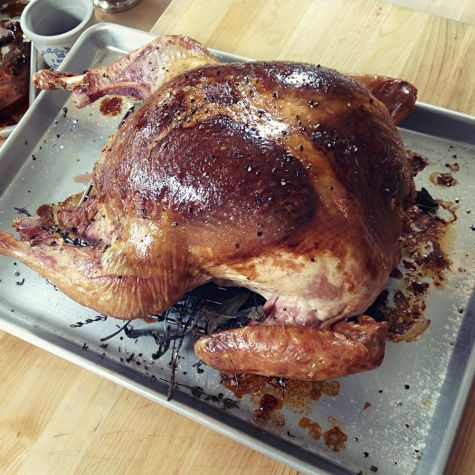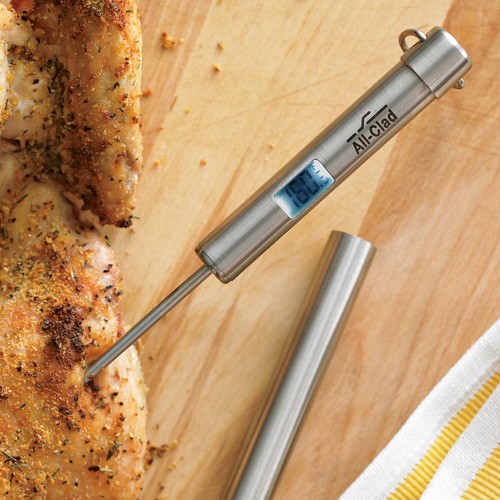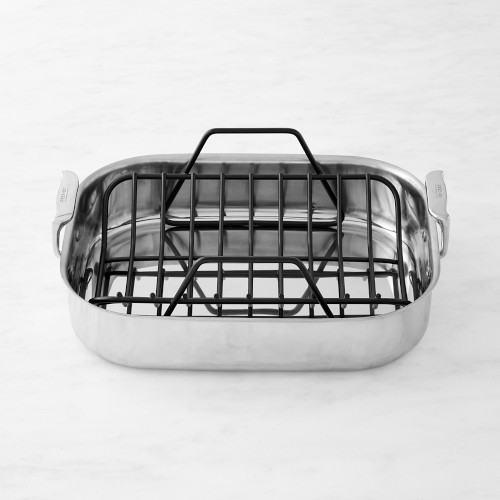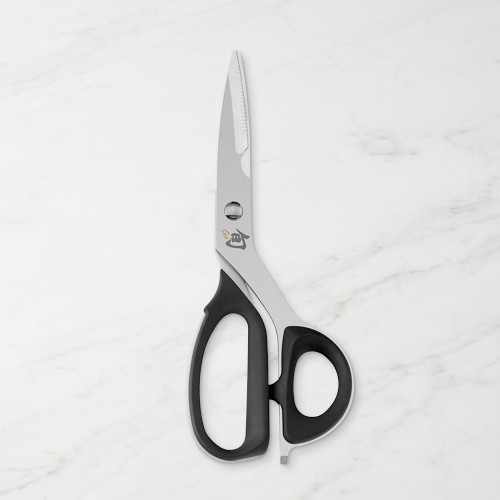
Super-Fast Roast Turkey
According to chef and restaurateur Tyler Florence, if you stuff your Thanksgiving turkey, by the time the stuffing is hot in the center, the breast meat is totally overcooked. To solve this problem, he pipes the stuffing between the skin and the breast. That way, you still get flavorful stuffing while protecting the breast. He also spatchcocks his turkey, or removes the backbone, which increases the bird’s surface area and allows the turkey to cook much faster. Even better, spatchcocking results in a juicy and tender bird without the need to brine it. Ask your butcher to spatchcock your turkey if you don’t want to do it yourself.
Ingredients:
For the stuffing:
- 4 cups (8 oz./250 g) sourdough bread, crust removed and bread torn into 1-inch (2.5-cm) pieces
- 2 Tbs. grapeseed or vegetable oil
- 1/2 lb. (8 oz./250 g) sage breakfast sausage, crumbled
- 1/2 cup (2 1/2 oz./75 g) diced carrots
- 1/2 cup (2 1/2 oz./75 g) diced celery
- 1/2 cup (2 1/2 oz./75 g) diced onion
- 5 fresh sage leaves
- 3 fresh thyme sprigs
- Kosher salt and freshly ground pepper, to taste
- 2/3 cup (5 fl. oz./160 ml) chicken stock
- 1 egg
For the turkey:
- 1 turkey, about 10 lb. (5 kg)
- Grapeseed or vegetable oil as needed
- Kosher salt and freshly ground pepper, to taste
- 1 bunch fresh sage
- 1 bunch fresh thyme
Directions:
Preheat an oven to 375°F (190°C).
Toast the bread on a baking sheet in the oven until crisp and golden, about 15 minutes. Remove the bread from the oven but leave the oven on.
In a large saucepan over medium-high heat, warm the oil, then add the sausage and let it brown. After it’s nice and golden on one side, stir to get color all over. Add the carrots, celery and onion, followed by the sage and thyme. Turn the heat down to medium and cook, stirring occasionally. Season with salt and pepper. When the vegetables are aromatic and tender, add a splash of water if necessary to loosen the brown bits from the bottom of the pan. Add the toasted bread and the chicken stock and stir.
Remove the thyme sprigs and pull the leaves off, adding the leaves back to the stuffing, and then transfer the stuffing to a food processor. Process until fairly smooth, adding the egg while pureeing.
Transfer the stuffing to a piping bag or resealable plastic bag with a corner snipped off. Set aside while you prepare the turkey.
Remove the heart and giblets from the turkey and reserve; discard the liver. Flip the turkey upside down so the breast is on your cutting board. Using kitchen shears, cut along both sides of the backbone so the bone can be removed. Pull the bone out of the turkey and reserve. Gently but firmly open up the bird a little (you can flatten it if you’d like) and set it on your board with the skin side up.
Insert your fingers gently between the skin and breast meat, separating the two while keeping the skin attached. You want to create a pocket for the stuffing without tearing the skin.
Pipe the stuffing underneath the skin of the bird, creating a layer between the meat and the skin. Rub grapeseed oil over the skin and season liberally with salt and pepper. Do the same to the underside of the bird.
Place a large rack on a roasting pan or baking sheet, and put the whole sprigs of herbs on top of the rack. Put the turkey skin side up on top of the herbs. Sandwiching the herbs between the rack and the turkey will prevent them from burning. Put the turkey in the oven and cook for 1 hour and 15 minutes. At this point, the skin should be golden brown and the temperature should be 135°F (57°C). To take the temperature, insert an instant-read thermometer into the thickest part of the thigh, staying away from the bone. Tent the turkey with aluminum foil and continue to roast until the temperature reaches 160°F (71°F) in the leg, about another 30 minutes. (The internal temperature will continue to rise as it rests.) Remove the turkey and let it rest for 15 minutes before slicing. Serves 10 to 12.
Adapted from Inside the Test Kitchen: 120 New Recipes, Perfected, by Tyler Florence (Clarkson Potter, 2104)

















